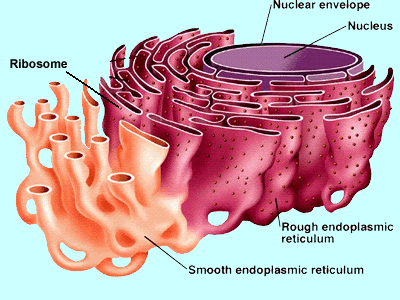The function of the endoplasmic reticulum is to package and transport chemicals within the cell and to the golgi apparatus for external transport. It provides a large surface area where synthesis of organic molecules can take place and chemical reactions can proceed rapidly. Two forms of endoplasmic reticulum are found in cells, smooth and rough.
The smooth endoplasmic reticulum is rich in a large number of enzymes and is most common in cells which are involved in the synthesis of lipids, triglycerides, lipoprotein complexes and steroids. The smooth endoplasmic reticulum synthesises phospholipids, which are used in membrane formation and releases calcium. Other functions of the smooth endoplasmic reticulum include the breakdown of glycogen and the many drugs and chemical agents found in the body.
